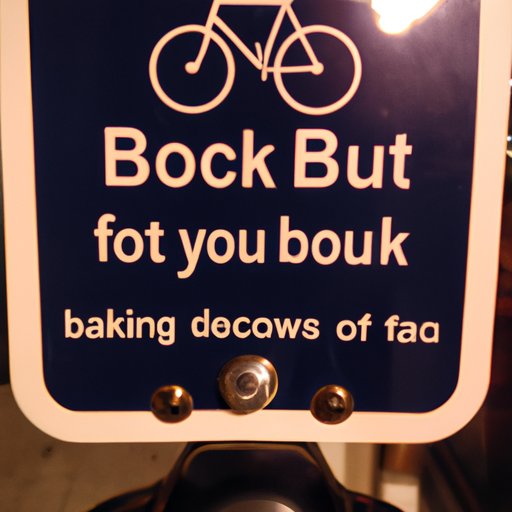Introduction
Bike riding is an excellent form of exercise that can help you build strength, improve cardiovascular health, and burn calories. But did you know that it can also be beneficial for your butt? Regular bike riding can help you strengthen your glutes, making them look and feel better. In this article, we’ll explore the benefits of bike riding for your bum, as well as techniques to maximize glute engagement while cycling.

Exploring How Regular Bike Riding Can Improve Your Glute Strength
The muscles used during cycling are primarily located in the legs, but regular bike riding can also help to strengthen your glutes. The glutes, or buttocks, are made up of three major muscle groups: the gluteus maximus, gluteus medius, and gluteus minimus. These muscles are responsible for hip extension, abduction, and internal and external rotation, all of which are important movements when cycling.
Regular bike riding can also be a low-impact form of exercise, meaning that it places less stress on the joints than running or other high-impact activities. This can be beneficial for those who have joint issues or are looking for a way to stay active without putting too much strain on their body. Low-impact exercises such as cycling can also be easier on the back, allowing you to engage more of your glutes during the ride.
Breaking Down the Science Behind Bike Riding and Its Effects on the Glutes
So what are the actual benefits of bike riding for your glutes? Studies have found that cycling can help to improve muscular endurance and strength in the glutes. It can also help to reduce lower back pain, since stronger glutes can provide more support for the spine. Additionally, bike riding can help to improve posture, as strong glutes can help to keep the hips in alignment.
There are potential downsides to bike riding for your glutes as well. If you’re not careful, you can overwork the glutes or cause them to become imbalanced. This can lead to tightness in one side of the body or even injuries. Additionally, if you don’t maintain proper posture while cycling, you may not be engaging your glutes as much as you could.

A Guide to Proper Bike Positioning for Maximum Glute Engagement
In order to get the most out of your bike rides, it’s important to maintain proper bike positioning. This will help to ensure that your glutes are engaged throughout the ride. Here are some tips for proper bike positioning:
• Make sure your seat is at the right height. The seat should be level with your hips, so that your legs can comfortably reach the pedals. If your seat is too low, you won’t be able to effectively engage your glutes.
• Keep your core engaged. Engaging your core muscles will help to stabilize your body and keep your glutes engaged.
• Stand up while pedaling. Standing up while pedaling engages more of the glutes than sitting down. If you’re going uphill, try standing up and leaning forward slightly to increase the intensity of the climb.
• Increase resistance. Increasing the resistance on your bike will make it more difficult to pedal, forcing your glutes to work harder. This is a great way to challenge yourself and build more strength in your glutes.
Conclusion
Bike riding is an excellent form of exercise that can help to improve your glute strength and overall health. Regular bike riding can help to reduce lower back pain, improve posture, and even give your butt a lift. To get the most out of your bike ride, it’s important to maintain proper bike positioning and increase resistance.


